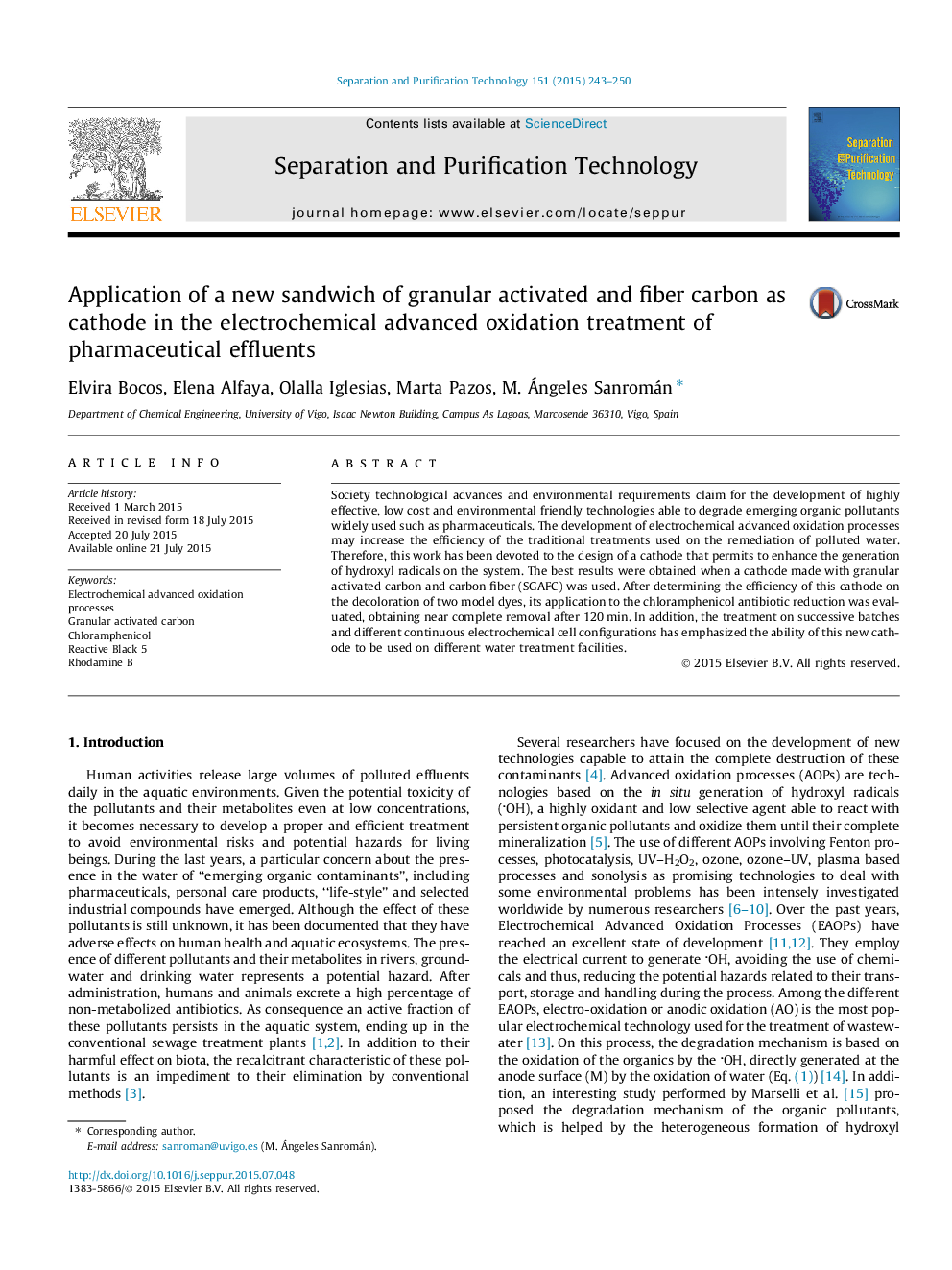| Article ID | Journal | Published Year | Pages | File Type |
|---|---|---|---|---|
| 640432 | Separation and Purification Technology | 2015 | 8 Pages |
•High generation of hydroxyl radicals in electrochemical treatment using SGAFC as cathode.•Electrochemical process using SGAFC takes place in two steps: adsorption and oxidation.•High removal rates of dyes and antibiotic by electrochemical treatment with SGAFC cathode.•SGAFC cathode ability to operate in different cell configurations without problem.
Society technological advances and environmental requirements claim for the development of highly effective, low cost and environmental friendly technologies able to degrade emerging organic pollutants widely used such as pharmaceuticals. The development of electrochemical advanced oxidation processes may increase the efficiency of the traditional treatments used on the remediation of polluted water. Therefore, this work has been devoted to the design of a cathode that permits to enhance the generation of hydroxyl radicals on the system. The best results were obtained when a cathode made with granular activated carbon and carbon fiber (SGAFC) was used. After determining the efficiency of this cathode on the decoloration of two model dyes, its application to the chloramphenicol antibiotic reduction was evaluated, obtaining near complete removal after 120 min. In addition, the treatment on successive batches and different continuous electrochemical cell configurations has emphasized the ability of this new cathode to be used on different water treatment facilities.
